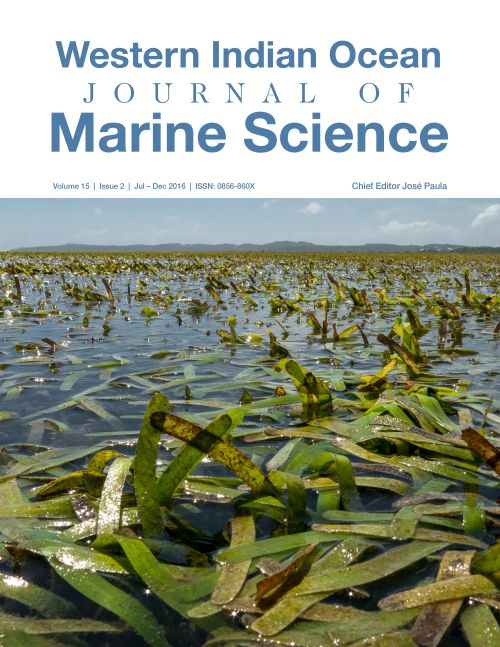Main Article Content
The spatial and temporal variations of nematofauna of recovering Rhizophora mucronata mangroves at Gazi Bay, Kenya
Abstract
The spatio-temporal variations in physical sediment characteristics and nematode community assemblages were investigated and compared between a natural, a 10-year reforested, and a degraded Rhizophora mucronata mangrove ecosystem in Gazi Bay, Kenya. PCA showed a clear separation of the degraded site from both the natural and the 10 years reforested sites based TOM and silt/clay. The wet and the dry seasons of the natural and the 10 years reforested sites were also separated based on salinity and silt/clay. An nMDS and ANOSIM analysis on nematode community gave a clear spatial pattern, with both the natural and the 10 years reforested sites separated from the degraded site. The genera Terschellingia and Pierickia were dominant in the natural and the 10 years reforested sites respectively, and were responsible for the differences between both the natural and 10 years reforested sites, and the degraded site. The degraded site was characterised by high densities of the genus Metachromadora. This study shows that clear felling of mangroves leads to changes in nematode genera composition. It is also evident that the nematode community has fully re-established within 10 years of reforestation.






